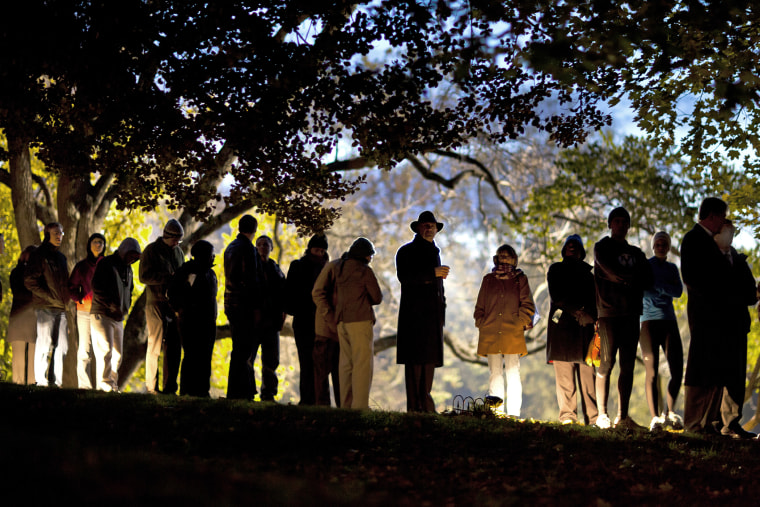When voters in Virginia went to the polls in 2012, a narrow majority backed President Obama's re-election bid, just as they'd done four years earlier. In a closely watched U.S. Senate race, the commonwealth's voters also elected Sen. Tim Kaine (D) over former Sen. George Allen (R) by about six points.
But just a little further down on the ballot is where things get tricky. If you add up all the votes case in each of Virginia's U.S. House races,
roughly 49% of Virginians voted for Democratic candidates, while about 51% supported Republican candidates. The state has 11 congressional districts, so if there was some kind of parallel between voter preferences and partisan results, we might expect to see five Democrats head to Congress from the state, along with six Republicans.
Except that's not what happened. Of Virginia's 11 U.S. House seats, Democrats ended up
with three victories to the GOP's eight. Dems may have won nearly 49% of the vote, but they also won about 27% of the representation.
This gap, while obviously discouraging to Democrats, was entirely predictable. After the 2010 Census, Virginia's Republican-dominated state government carefully crafted a district map intended to maximize GOP victories. How? Step one, of course, was drawing lines in such a way as to keep as many African-American voters together as possible, effectively creating noncompetitive districts.
Late last week, this map ran into some trouble. The
Washington Post reported:
A panel of federal judges issued a ruling Friday that Virginia lawmakers illegally concentrated African American voters into one congressional district to reduce their influence elsewhere, bringing the state a step closer to being forced to redraw its election map. The U.S. District Court for the Eastern District of Virginia affirmed its earlier decision and ordered the Virginia House of Delegates to redraw the state's 11-district congressional map by Sept. 1.
It's not yet resolved -- an appeal is inevitable -- but this has the potential to be a pretty big deal.
Over at Vox, Andrew Prokop also had a
good summary on the controversy.
[W]hen state Republicans proposed this map in 2011, Democrats argued ... that black voters were being unconstitutionally packed into the third district to dilute their voting strength. Though the GOP got the map through the narrowly divided state Senate by just one vote the following year, Democrats soon sued. Now these federal judges have agreed with their criticism. The panel of judges has ordered Virginia's legislature to pass a new map by September 1, 2015. The GOP legislature would still draw up the new maps, which could limit hopes of Democratic gains. But the Republican governor who signed the original maps, Bob McDonnell, is no longer in office (and has since been convicted on corruption charges and sentenced to jail time). So Gov. Terry McAuliffe, a Democrat, would be able to veto any new map.
If you're thinking this might be a contentious process, you're not alone. As the Post's report added, "Democrats and advocates for reducing the influence of politics on redistricting applauded Friday's decision. And they could benefit politically: Diluting the African American makeup of the state's black-majority district would make adjacent districts less Republican and potentially vulnerable to Democratic challenge."
If appeals fail, Virginia lawmakers would have to return for a special session this summer.
